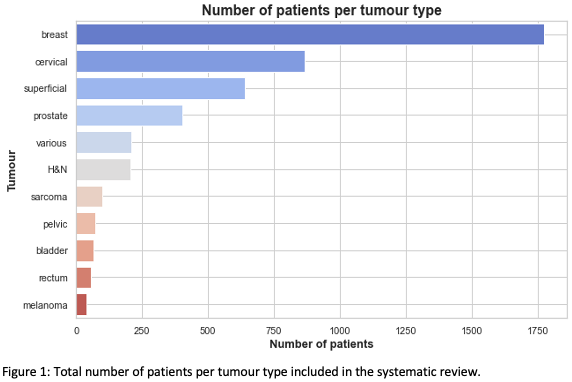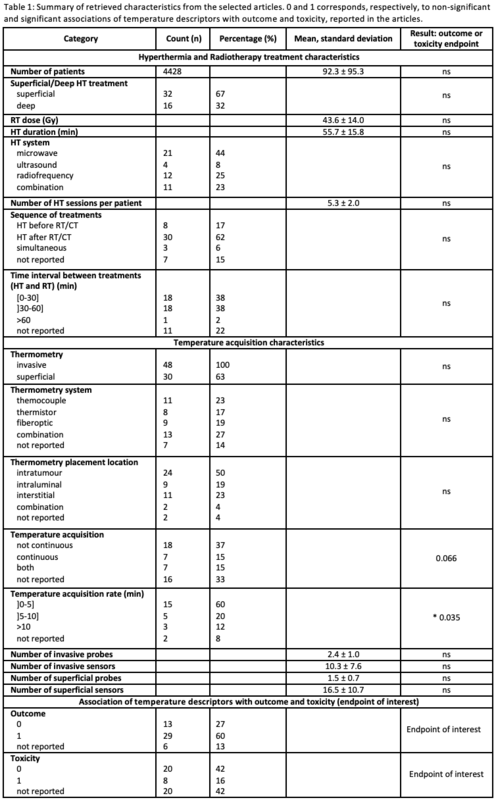Factors influencing hyperthermia in vivo thermal dosimetry, a systematic review
Carolina Carrapiço-Seabra,
The Netherlands
PO-1465
Abstract
Factors influencing hyperthermia in vivo thermal dosimetry, a systematic review
Authors: Carolina Seabra1, Sergio Curto1, Gerard C. van Rhoon1,2
1Erasmus MC Cancer Institute, University Medical Center Rotterdam, Department of Radiotherapy, Rotterdam, The Netherlands; 2Faculty of Applied Sciences, Delft University of Technology, Department of Radiation Science and Technology, Delft, The Netherlands
Show Affiliations
Hide Affiliations
Purpose or Objective
Hyperthermia (HT) is the elevation of tumour temperature up 43°C. Randomized clinical trials have shown the benefit of HT as a sensitizing agent for radiation therapy (RT). Currently, in vivo dosimetry is an essential part of both modern RT and HT. In HT, dose delivery is a two-step process. Energy deposition can be predicted directly inside the patient, while the resulting tissue temperature depends on the local energy removal by blood perfusion. As blood perfusion is patient, tumour and temperature dependent, temperature is difficult to predict. Consequently, the common accepted procedure in regular HT treatments is to measure in vivo temperature. However, the lack of standardization on temperature acquisition procedures, as well as in corresponding reported thermal dose parameters are still hampering implementation of applying thermal therapy to a prescribed thermal dose. In this study, we performed a systematic review to investigate the influence of HT treatment characteristics on the predictive ability of temperature descriptors for treatment outcome and toxicity.
Material and Methods
A systematic review was conducted in accordance with the PRISMA guidelines. EMBASE, Web of Science, Cochrane library and clinicaltrials.gov were the four searched databases. The search was limited to English articles, but it was not restricted to publication date. A filter for full-length published papers and clinical studies was applied. Both single-arm and 2-arm studies, randomized and non-randomized, retrospective and prospective were included. Furthermore, these fulfilled the following criteria: (1) cancer treatment with HT and RT; (2) associations of in vivo measured temperature/thermal descriptors with treatment outcome or toxicity were investigated. We tested possible influences of HT characteristics on reported relation of temperature/thermal parameters with outcome and/or toxicity with Fisher exact test (two-tailed). A p−value < 0.05 was considered significant.
Results
Forty-eight articles were included in the systematic review. These reported a total of 4428 patients with different tumour pathologies (Figure 1). Table 1 presents the investigated categories and significant Fisher test results. Temperature acquisition, i.e., non-continuous or continuous, showed a p-value close to significant (p−value = 0.066). Rate of temperature acquisition was significantly associated with relevant thermal dose descriptors (p−value = 0.035). This means that performing temperature acquisitions faster than five minutes might increase the chance of relating measured temperatures with treatment outcome or toxicity. Moreover, neither spatial distribution nor spatial density of temperature probes/sensors was correlated with finding a thermal dose effect relationship.


Conclusion
Temperature measurement procedures, such as rate of acquisition, seem to influence the predictive role of temperatures, i.e., its reliability as treatment quality descriptors.